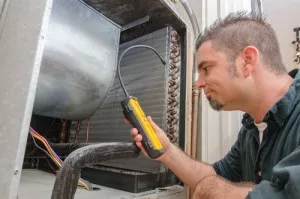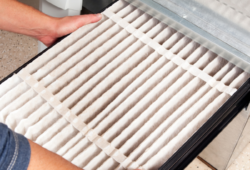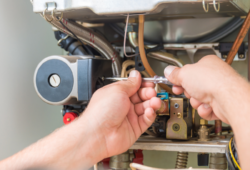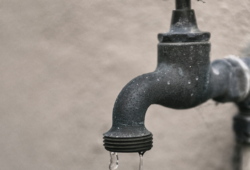What’s Involved in Adding Central Air Conditioning to an Older Home?
Adding central air conditioning to an older home can make the space much more comfortable and inviting. However, older homes can often present challenges to the installation of modern air conditioning equipment and infrastructure. The following information provides an overview of the process of adding central air conditioning to an older home, and it will give you an idea of what to expect if you decide to proceed with an air conditioning renovation project.
Perform a Load Calculation
The first step in adding central air conditioning to an older home should be a load calculation. This is a sophisticated process of inspection and evaluation that tells your HVAC professional exactly how much cooling you will need for your older home. It involves a careful inspection of the home that takes into consideration the thermal and physical characteristics of the structure. The load calculation also involves complex mathematical calculations that take into account all of the factors that influence cooling for the space.
Properly Size the Air Conditioner
With the results of a load calculation, your HVAC expert can help you choose a properly sized system for adding central air conditioning to an older home. In this case, size doesn’t refer to the physical dimensions of the air conditioning system, but instead to its functional capacity.
An air conditioner that’s sized too small won’t be able to adequately cool your indoor living spaces. In addition, the equipment will work too hard to meet temperature demands, which will add wear and tear that shortens system life and makes breakdowns more likely. If an air conditioner is too large, it will produce too much cooling and waste significant amounts of energy and money. The system won’t cycle correctly, reducing the effectiveness of the A/C in removing indoor humidity.
A properly sized air conditioner will produce the correct amount of cooling for the space and will meet your individual comfort demands for your older home.
Perform an Energy Audit
An additional step you can take before adding central air conditioning to an older home is an energy audit. This process is designed to find out where you’re using the most energy in your home and where energy waste is occurring. An energy audit can tell you where you need to focus energy conservation efforts, sealing and insulation projects, and other procedures for reducing the amount of energy used and increasing the energy efficiency of the structure.
An energy audit can include steps such as:
- An analysis of your energy bills and energy use patterns – This can show where changes in energy use could reduce costs and improve energy conservation. It can also reveal where large amounts of energy are being wasted.
- Infrared video and photography – These can indicate where heat is escaping through the walls. This type of testing can show where insulation should be added to your home.
- Surface temperature testing – This testing shows inconsistent temperatures in walls and other surfaces. Inconsistent surface temperatures are also indicators of locations where more insulation is needed.
- Infiltrometer testing – This test reveals the location of otherwise hidden air and energy leaks. When you know where these leaks are located, you can concentrate on sealing them to stop the waste of energy and money they cause.
Seal and Insulate
Whether or not your include an energy audit in your air conditioner project, sealing and insulating your older home is a good idea. To get the best performance and efficiency out of your new central air conditioner and to keep cooling costs at a minimum, you should make sure your older home is properly sealed and insulated.
Sealing involves finding and closing up any holes, cracks, gaps or other openings where cool air could leak out and warm air could get in. This can include caulking or sealing in areas such as:
- Around door and window frames and casings
- Around penetrations in the walls where pipes, conduits or wires come in
- Around exhaust or ventilation fans mounted in the walls
- Around areas where the house frame connects to the attic or foundation
- Around the connections in HVAC system ductwork
You can improve insulation by adding more insulation to walls, floors, ceilings and foundations. Blanket or batt fiberglass insulation is commonly used for this process. Attics should be thoroughly insulated to prevent them from getting excessively hot in the summer. Attic insulation can include blanket insulation between wall and floor beams or loose-fill or foam insulation in hard-to-reach or irregularly shaped areas. Areas that aren’t insulated, such as crawl spaces, should have insulation installed. Any new or existing ductwork for the cooling system should be insulated to prevent energy loss through the material of the ducts.
Install a High-Efficiency Unit
After going to the effort and expense of adding central air conditioning to an older home, it makes sense to install a high-efficiency cooling system. Lower-efficiency systems will still provide cooling, but a high-efficiency air conditioner will provide better and more consistent cooling at a lower price.
Look for an air conditioning system with a high seasonal energy efficiency ratio, or SEER. This number indicates how efficient the unit will be, with larger numbers indicating greater efficiency. Since January 23, 2006, air conditioning units in the United States must carry a SEER rating of at least 13. Average high-efficiency units will have a SEER number around 18.
Air conditioning systems are available with SEER ratings in the mid-20s, making these some of the most efficient cooling systems available. Ask your HVAC professional for help choosing the best and most efficient cooling equipment for your needs.
Keep in mind that high efficiency air conditioners use significantly less energy and operate at a much lower monthly cost than lower efficiency units. The cost of a high efficiency air conditioning system can often be recovered in monthly savings alone by about the midpoint of the system’s expected lifespan.
Add or Extend Ductwork
In older homes, the addition or extension of ductwork is one of the major issues homeowners encounter. The ductwork is the extensive set of pipes or tubes that carries heated or cooled air from your HVAC unit to the inside of your home. Forced air heating and cooling systems require ducts for conditioned air distribution.
If you already have a cooling or heating system that uses standard ductwork, the extension of the ducts to accommodate a central air conditioner will be relatively easy. In many cases, there may not be any extensions required and the central air system can simply be connected into the existing duct network.
If your older home doesn’t have ductwork installed, it will be necessary to put in a duct network for the central air conditioning system. This will often involve cutting holes in walls or floors for supply vents and return registers, along with attaching to ducts to walls, floors or ceilings as necessary. Traditional metal ductwork will often be used, which consists of segments of boxy metal pipes extending from your HVAC unit to the vents and registers throughout your home.
Metal ductwork must be installed so that all segments fit tightly together to help prevent air leaks. Segments can be attached to each other with sheet metal screws or other appropriate fasteners. Connections must be sealed with metal tape or mastic, which is a specialized rubbery sealant used on ductwork. Standard duct tape is not recommended since the adhesive can dry out and let the tape to fall away. Ducts must be properly sized to deliver adequate amounts of air without restriction and without waste.
In cases where metal ductwork isn’t feasible, high-velocity tubing can be used as an alternative to standard ducts. This round, flexible tubing can carry heated and cooled air just as effectively and efficiently as standard ducts but is easier to install and use.
For more information on adding central air conditioning to an older home, check out Air Experts’ air conditioning solutions or call 919-480-2727.
Image Provided by Shutterstock.com





